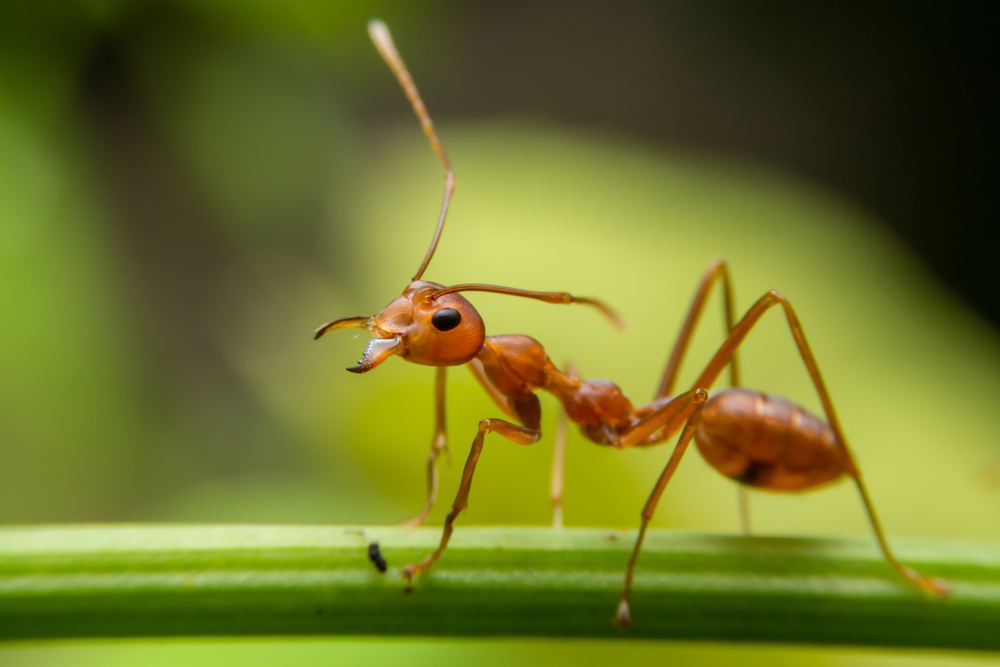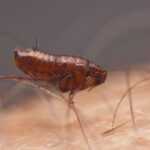Fire Ants: Identification, Behavior, and Control Methods
These ants exhibit aggressive behavior and deliver painful stings and bites, making them a dangerous species that attacks both humans and the environment. Fire ant stings cause intense burning sensations, swelling, and, in some cases, severe allergic reactions in humans. Red imported fire ants (Solenopsis invicta), an invasive ant species, accidentally entered the United States from South America. They have since established themselves in many regions outside their native range. Human activities have significantly contributed to the global spread of this pest by facilitating their movement through trade and transport. These ants impact ecosystems and human activities around the world. This article explains how to recognize them, understand their behavior, and implement effective methods to control their populations. A unique feature of their colonies is the ability to form a supercolony, where interconnected nests share resources and workers, increasing their resilience and making control efforts more challenging.
The reddish-brown coloration, polymorphic size, and presence of multiple entrance mounds help identify and control them. Additionally, colonies can form multiple queen groups, which contribute to their rapid spread and resilience.
Their aggressive behavior and painful stings pose significant threats to agriculture and biodiversity, requiring careful monitoring and management. These ants swarm when their nests get disturbed, rapidly attacking perceived threats.
Managing populations requires a multi-level approach that combines chemical, biological, and preventative methods, along with professional pest control services to achieve the best results. Integrated pest management strategies play an essential role in effective control.
Distinguishing Fire Ants from Other Species
Physical features and mound architecture help differentiate these ants from other species. The genus Solenopsis includes more than 200 stinging ant species, such as ginger ants and tropical fire ants. The tropical fire ant (Solenopsis geminata) is another notable species, native to certain regions and often confused with the invasive red imported fire ant. Some ant species, including these, deliver painful bites as well as stings, which cause significant discomfort to humans. Recognizing these differences helps manage populations. The red imported fire ant exhibits aggressive behavior and painful stings and requires correct identification for control purposes.
These ants form two main types of colonies: monogyne colonies, which have only one queen per mound, and polygyne colonies, which have multiple queens. Monogyne colonies tend to build larger, more territorial mounds that are fewer in number, while polygyne colonies have smaller workers, denser mound populations, and workers that move freely between colonies. Polygyne colonies sometimes form supercolonies, where interconnected nests share resources and workers.
Key features that distinguish these ants from others include:
- Size: They have polymorphic workers that vary in size, ranging from 1/16 to 1/5 of an inch.
- Color: They exhibit a reddish-brown color with darker abdomens.
- Mound Characteristics: Their mounds have specific traits that distinguish them from other ant species.
Physical Characteristics of Fire Ants
You can identify the red imported species by its unique physical traits. These ants have reddish bodies with a shiny dark brown gaster and large eyes, which make them stand out from other ant species. They also possess 10-segmented antennae with a distinctive two-segmented club, which helps in identification. Additionally, they have a two-segmented petiole between the thorax and abdomen, distinguishing them from other ants.
Adults range in size from 1.5 to 4 mm, with worker ants generally smaller than reproductive males and females. Size variations, characteristic color, and antenna structure serve as key identifiers.
Identifying Fire Ant Mounds
Mounds clearly indicate their presence. These physical structures, typically made of soil or soft material, serve as the colony’s nest. An ‘ant mound’ refers to the physical nest constructed by ants, and these mounds represent a specific type of ant mound with unique characteristics such as their dome shape, loose and dry appearance, and notable size. The mounds often appear dome-shaped, loose, and dry, distinguishable by their height, width, and multiple entrances. They can grow up to 18 inches high and 24 inches wide. Some mounds form from a small amount of soil, making them less conspicuous and harder to spot. The mounds appear loose and dry and differ from other ant nests by their height and shape.
Unlike many other ant species, these mounds lack a single entrance but have multiple openings. Ants enter their mounds through these various openings, which serves as a key identification feature. These mounds connect to extensive underground foraging tunnels that allow ants to search for food over a wide area. This structure plays a critical role in identifying infestations and managing populations effectively.
Behavior and Habitat of Fire Ants
These ants exhibit aggressive behavior and adapt to various environments. Understanding their behavior and preferred habitats proves crucial for effective control. They thrive in humid environments, predominantly in the southeastern United States, and commonly nest in soil or under objects like logs and rocks. Nests often occur in moist areas, which support colony survival. They especially succeed in disturbed habitats, such as areas affected by human activity or environmental changes.
Colonies demonstrate resilience by relocating deeper underground during extreme weather conditions. Nests typically appear in sunny, open areas such as meadows, lawns, and agricultural lands. Their feeding habits include foraging for insects and other small animals, which impact local food chains and disrupt ecosystem balance. Maintaining a clean yard and removing food sources significantly reduces the chance of nearby colonies.
Aggressive Nature and Painful Stings
These ants become extremely aggressive when disturbed and attack any perceived threat. Their stings contain venom that causes painful skin reactions and allergic responses. Multiple rapid stings lead to severe itching and blistering. People stung often experience immediate pain and may develop a white pustule at the sting site. In some cases, severe allergic reactions require immediate medical attention.
Their painful sting and bites cause significant harm to agricultural crops, including corn and citrus, and endanger livestock and wildlife. Their combination of aggressive behavior and venomous stings demands specialized pest management approaches. They swarm when their nests get disturbed, rapidly attacking threats.
Preferred Environments
They prefer locations with sunlight and easy access to food and water in both agricultural fields and urban environments. They build colonies in disturbed soil across gardens, lawns, open fields, and parks in urban areas.
Their adaptability to various habitats enables them to spread widely and become persistent pests that prove difficult to eliminate once established. They form self-sustaining populations in many regions outside their native range.
Impact of Fire Ants on Ecosystems
These ants significantly alter ecosystems by becoming dominant feeders and shaping local species composition. Their aggressive nature causes declines in native ant populations, negatively affecting biodiversity. They outcompete keystone species, leading to cascading effects on ecosystem stability. They also reduce native prey populations and negatively affect pollinators such as bees, further disrupting ecosystems. Understanding their native range and ecological impact remains vital for assessing these effects.
The global invasion affects ecosystems and agriculture worldwide, highlighting the need for effective population control to protect native species and biodiversity. The impact on ecosystems and agriculture appears in many parts of the world, where their spread disrupts local environments and farming practices.
Displacement of Native Species
They outcompete native ant populations for resources, leading to their displacement and reduced biodiversity. Competition for nesting sites plays a major role in this displacement. They also decrease populations of small animals by competing for food, disrupting ecosystem balance and reducing native fauna diversity.
Effects on Agriculture and Wildlife
They damage crops by injuring plants and competing for food resources, resulting in decreased agricultural output. They also harm livestock through stings, causing injuries or infections that impact farm productivity. Destruction of seeds and seedlings causes significant economic losses in agriculture.
The damage caused by this invasive species results in long-term changes to ecosystems and disrupts plant reproduction. Their impact on agriculture and wildlife necessitates strong control programs.
Methods for Controlling Fire Ant Populations
Managing populations requires a combination of chemical, biological, and preventive strategies to control them effectively. Integrated pest management remains essential for effective control. Various products and techniques kill these ants and suppress colonies. Direct application of an insecticide spray on mounds targets control efforts. Broadcast bait treatments cover large infested areas efficiently. Timely mound treatment combined with regular monitoring prevents larger infestations. Successful management often involves local authorities and pest control professionals.
Ongoing research and management projects improve control strategies. Participating in a management project helps coordinate efforts and implement developed methods for long-term control.
Chemical Control Options
Chemical treatments primarily involve baits containing insect growth regulators and other active ingredients that target colony structures. Granular insecticides also prove effective for treating mounds and surrounding soil. Professional pest control advice remains recommended due to their expertise and equipment.
Certified pest control professionals provide safe and effective treatments, especially in sensitive environments.
Biological Control Methods
Biological control uses natural predators and pathogens to reduce populations in an environmentally friendly way. Researchers have released parasitic phorid flies as part of control efforts. Several biological control agents have emerged through research to specifically target these ants. These natural enemies help manage them without harming the ecosystem.
Research continues to evaluate the effectiveness of biological controls.
Preventative Measures
Preventing the spread remains fundamental to population control. Quarantine regulations restrict movement of infested soil, plants, or equipment. Proper application of baits achieves up to 90% control. Combining fast-acting and slow-acting baits provides rapid and sustained effects. Using pesticide products according to label instructions ensures safety and effectiveness.
Fire Ant Infestations Require Reporting and Active Management
Promptly reporting suspected sightings proves crucial for management and ecosystem protection. Surveillance programs enable early detection and rapid response. Universities like Texas A&M and the University of Texas provide valuable research and resources to support control strategies. Effective control and prevention depend on timely reporting and professional interventions.
How to Report Suspected Fire Ants
Report suspected sightings to local agricultural departments and pest management authorities. Use identification guides to confirm sightings before reporting. For immediate assistance, visit the National Fire Ant Eradication Program website or call 132 ANT. Prompt reporting supports better control and prevention.
Local agricultural extension services and pest control agencies also serve as reliable contacts.
Professional Pest Control Services
Biological control methods use natural enemies as environmentally safe options. Professional services like Gopher Patrol offer effective control and Gopher control. Certified applicators should perform treatments to ensure safety and success.
These ants represent a global invasive species, and human activities have contributed to their spread. Controlling them requires understanding their physical traits, ecological impacts, and behavior. They have caused significant ecological and agricultural problems in regions such as Australia and Texas. Effective management combines chemical, biological, and preventive methods with prompt reporting and expert assistance. Participation in eradication programs supports long-term control.
Protecting homes and the environment remains possible through active monitoring and quick response to infestations. Professional pest control services help safeguard your surroundings.
Frequently Asked Questions
How can I identify a fire ant?
They have reddish-brown bodies with darker abdomens and measure between 1/16 and 1/5 of an inch. They have strong mandibles for biting and handling food. Their antennae have 10 segments, with the last two forming a club.
What are the most effective methods for controlling fire ants?
Effective control involves chemical baits and insecticides combined with biological methods using natural predators. Individual mound treatments target specific colonies. Maintaining a clean yard helps prevent establishment.
How do fire ants impact agriculture?
They cause economic damage by harming seeds and seedlings, reducing agricultural productivity. In addition, fire ants compete with other species for food and can injure livestock, affecting farm output. Furthermore, these ants reduce productivity in pasture lands by harming grazing animals and damaging forage.
What steps should I take if I believe fire ants are infesting my property?
Professional pest control services have the skills and equipment for safe, effective management. Property owners should work with professionals to develop comprehensive treatment plans for eradication.
Professional pest control ensures complete elimination and helps prevent future infestations.





